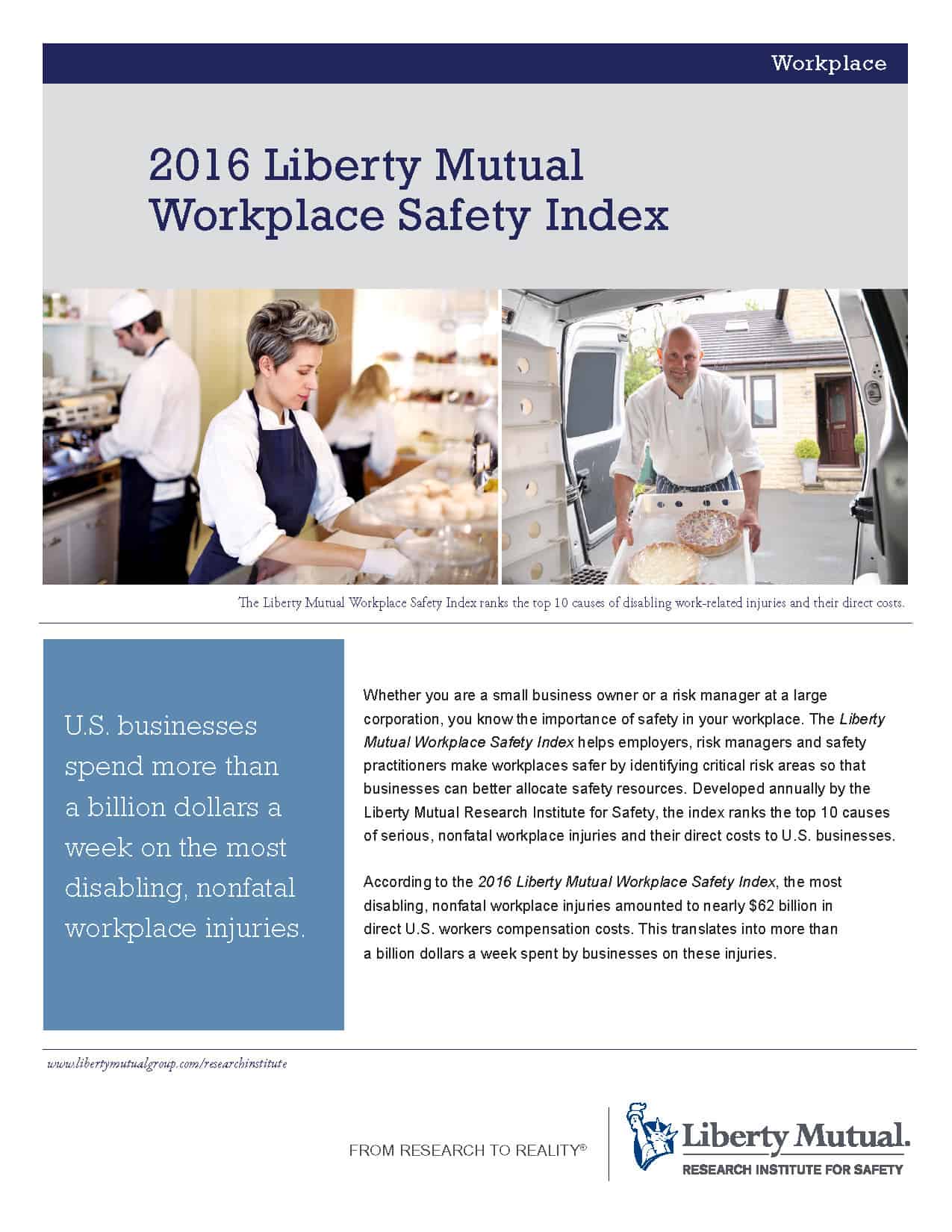 The annual workplace safety report Liberty Mutual Research Institute for Safety always gets a good deal of mainstream media attention. It deserves some of this attention as it has provided sound information on work-related injuries and injury costs for many years but it is now looking dated as it is not keeping up with current research in to the business case for safety, the move to leading indicators and the incorporation of psychosocial injuries (which are also covered by workers compensation).
The annual workplace safety report Liberty Mutual Research Institute for Safety always gets a good deal of mainstream media attention. It deserves some of this attention as it has provided sound information on work-related injuries and injury costs for many years but it is now looking dated as it is not keeping up with current research in to the business case for safety, the move to leading indicators and the incorporation of psychosocial injuries (which are also covered by workers compensation).
The media release in support of the report illustrates the limitations. The graph caption shows “Top 10 Causes and Direct Costs of the Most Disabling U.S. Workplace Injuries”.
Direct costs are associated with the costs to the employer and principally relate to workers compensation costs. (Fatalities are not included in the survey) There is no mention of the familial and social cost or the costs required to be borne by the worker. Liberty Mutual’s National Insurance Casualty operation general manager, Debbie Michel, acknowledges some of these indirect costs
“Beside these direct costs, workplace injuries also produce such indirect costs for employers as hiring temporary employees, lost productivity, quality disruptions and damage to a company’s employee engagement and external reputation.”
Could Liberty Mutual not estimate these costs, if not in dollar terms, then in ratios of impact per type of incident?
Possibly the most obvious limitation is that the data only covers physical risks. For those outside the occupational health and safety (OHS) field the data and the graph above shows the most costly injury is overexertion. There is no mention of psychosocial injuries or illnesses. No mention of workplace mental health, no mention of stress, burnout, bullying……….
Michel, touches on psychosocial issues but only those that are generated by the physical.
“Workplace accidents impact employees’ physical, emotional and financial wellbeing. They also financially burden employers, who pay all of the medical costs related to a workplace injury, together with some portion of an injured employee’s pay.”
The second sentence in this quote seems debatable as employers, usually reluctantly, may pay a worker’s medical costs but probably not “all” of them.
It is also useful to ask whether employers feel like they are paying the cost of workplace injuries or whether they feel like they are paying insurance premiums on management issues they would rather not confront.
There is no doubt that the cost of workplace injuries identified by Liberty Mutual is high, at almost US$62 billion annually. But how much higher, and more realistic, the data would be if it included psychosocial hazards, the indirect costs of injuries and illnesses and cost data on workplace fatalities?
Liberty Mutual would be stretching its area of expertise by researching business cases but such research would position it as safety (and social) experts who would benefit in its sector by looking at the bigger picture.


Kevin – a thumbnail but significant anlaysis on your part. Here is OZ we need to be careful when considering such US data , given their employment set ups and use of piecemeal workers and current reductions in employee benefits.
What has surprised me in this data is the low percentages atributed to roadway incidents involving vehicles, whereas in Australia it is generally considered by most industries to be one of their biggest risks. I am also amazed that repeetitive motions rank last on this table, but then you did point out this is onlt workers compensation related costs and many states do not recognise the concerns with ergonomics which are well documented.
It may be harder for Liberty to quanity the indirect costs given the fact that so much we take for granted here, is not covered in the US. Such quantification could produce some alarmingly high indirect costs, but until employers and business organisations really accept that these costs truly do impact upon their own business in more ways than one, and that they have a degree of responsibility to take care of some of that and reduce the burden on the wider community, the social divide that is so prevalent there will continue.